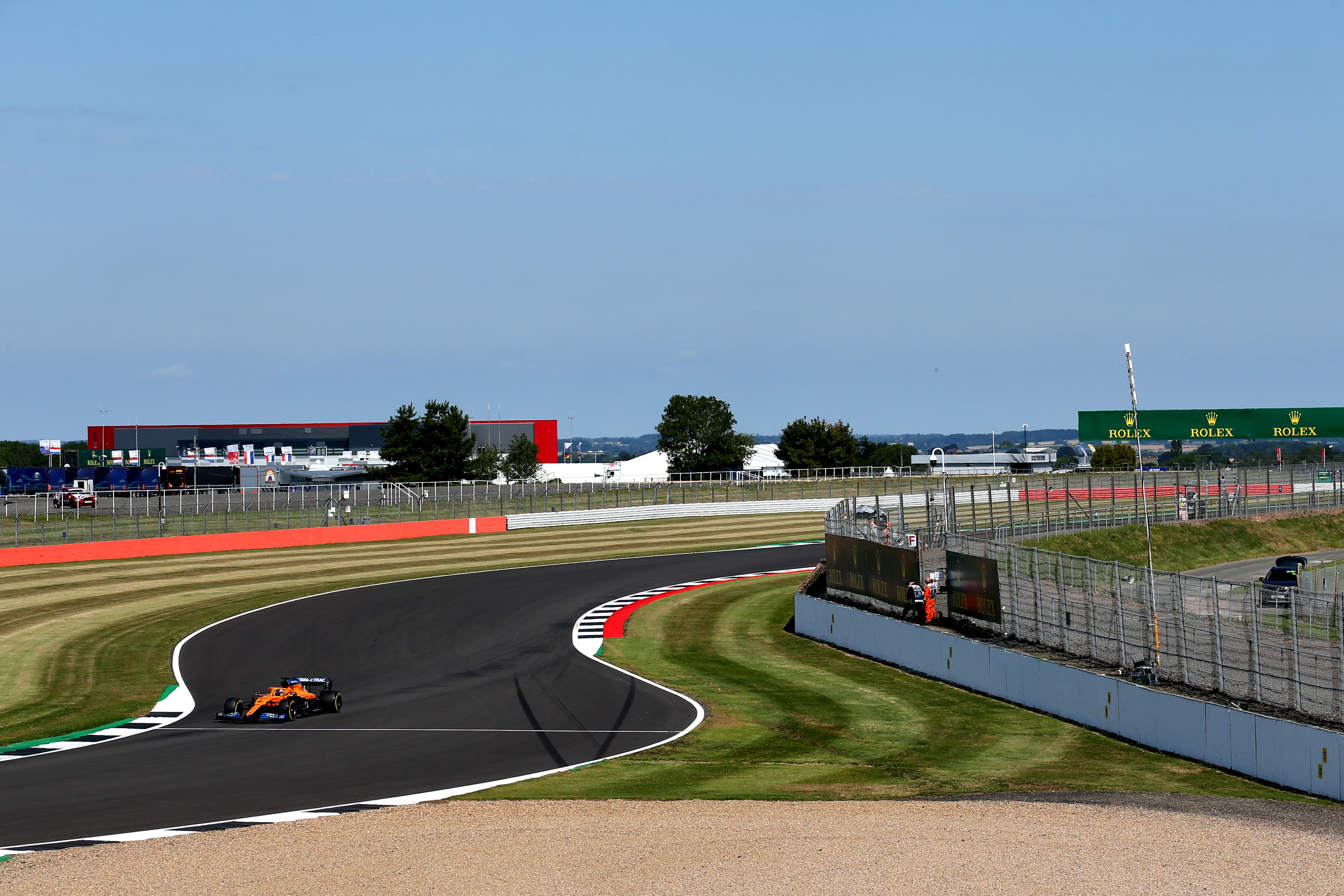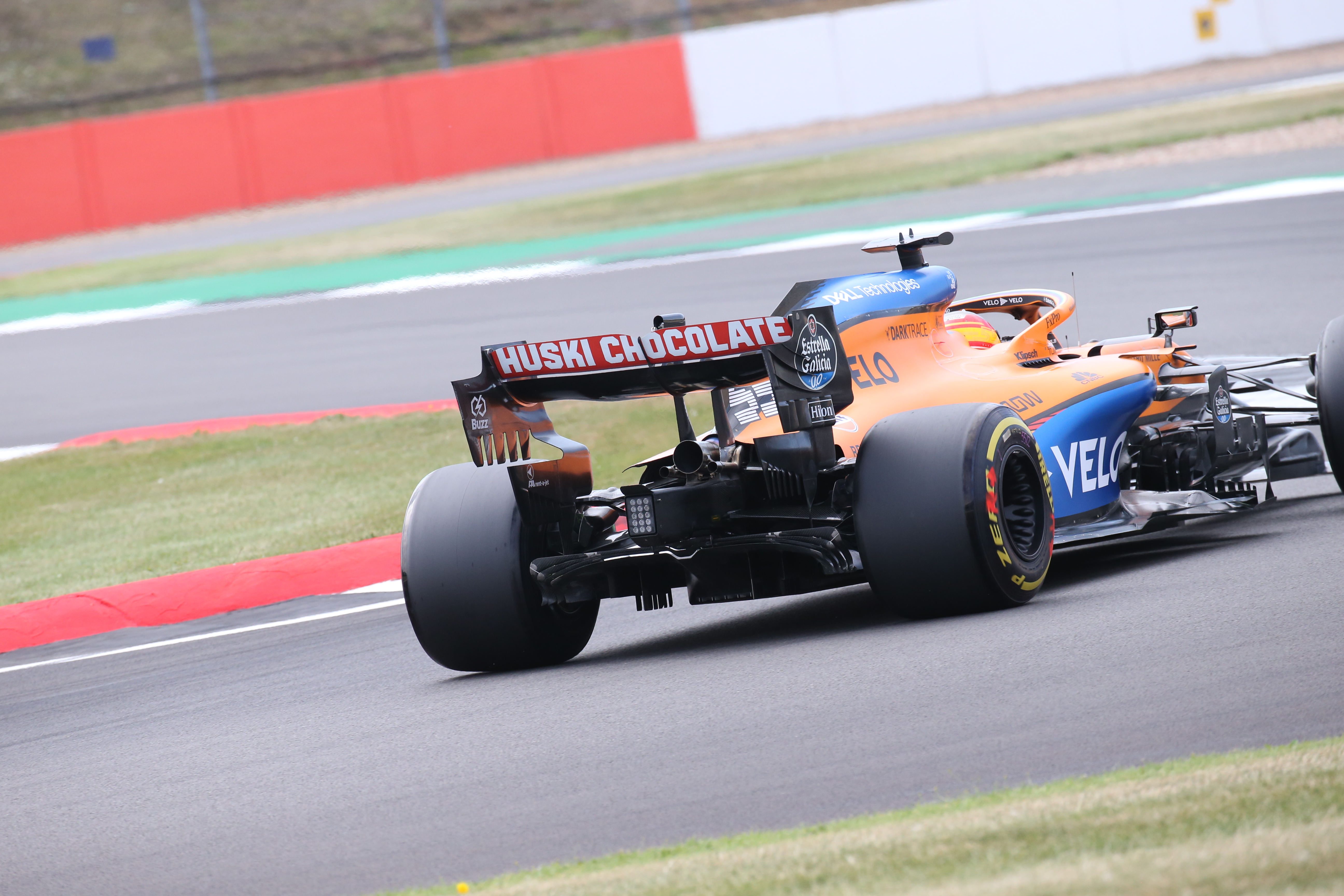Up Next

Carlos Sainz Jr expects to carry a top-speed deficit into Formula 1’s 70th Anniversary Grand Prix after McLaren adapted his bodywork for qualifying because of an undetermined cooling issue.
Sainz failed to make the top-10 shootout in qualifying for the first time this season as McLaren endured a tough Saturday at Silverstone, with the Spaniard 13th-fastest but set to start 12th after a grid penalty for Esteban Ocon.
After suffering a two-tenth deficit to team-mate Lando Norris in the two segments of qualifying they completed, Sainz revealed McLaren had to make a bodywork change to protect his engine.
McLaren has not been able to identify the issue so the only solution to avoid Sainz facing extreme temperature management on Sunday was to open up the bodywork to improve cooling.
“We saw our car running a bit too hot, and going into tomorrow being a very hot day, and probably being in traffic during the race we know I was going to probably have to do some temperature management,” Sainz said when asked by The Race to explain the impact of the issue.
“So we decided to take the precaution to be able to race flat out tomorrow.
“Unfortunately, it costs us a bit in qualifying and it will cost us tomorrow in top speed in the race but at least it means that we will be able to race flat out.
“It’s something that we’ve seen in my car I think since yesterday but for some reason we cannot find out exactly what’s going on and we had to commit to these to this bodywork for PU protection.”

Norris has not had the same issue, and McLaren technical director James Key said that small temperature differences between cars are not uncommon.
But Sainz’s is more than that, as one cooling circuit is “particularly hot and we don’t understand why”.
With temperatures around 30 degrees at Silverstone this weekend any issue is likely to be exaggerated as well.
“That could be a sensor,” said Key. “It doesn’t appear to be to do with the coolers or ductwork surrounding those coolers and things like that.
“Sometimes it’s down to the way the drivers are driving, they have an average higher power output for a given lap etc.
“So you do see it occasionally and I don’t think there’s ever been a year where there hasn’t been one or two degrees between the two cars.
“But the current situation was a little bit more than that. So we had to put Carlos on different bodywork.”
GARY ANDERSON EXPLAINS

Every team will have two or three bodywork specifications to adjust the cooling.
It’s not uncommon for there to be a slight difference between two cars, but these current cars run so near the upper limit that when it happens you have to do something about it.
Normally, the change will be to the exit area at the rear of the sidepods or perhaps a slightly different engine cover with a larger exit. Some teams have some little louvre panels that fit just beside the driver’s head.
Opening up the exit pulls more airflow through the radiator inlet, meaning that it will go through the radiator that little bit faster – taking more heat with it.
The negative of that is that it reduces the amount of airflow that is being managed by the bargeboards etc to produce downforce.
So for something like a five-degree cooling improvement you will lose perhaps one percent downforce.
Not only that, but the air doesn’t go through the radiator faster of its own accord. It is opening up that exit to the low pressure area behind the car that makes it flow faster, so you also get an increase in drag – which in turn reduces your top speed.
These are the simple reasons why the teams trim the cooling as close as possible to the absolute limit.



